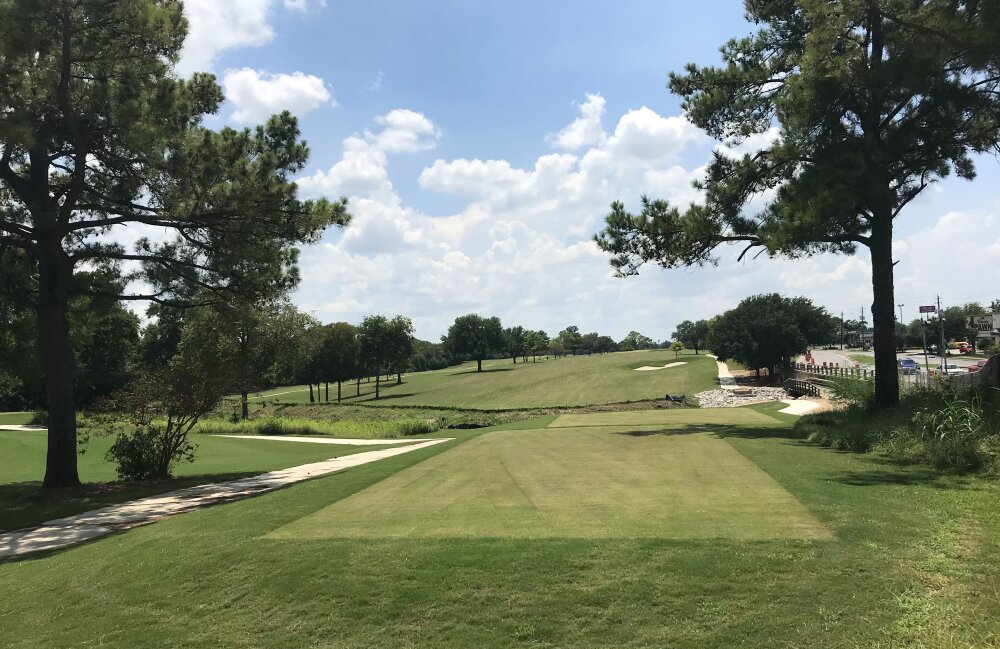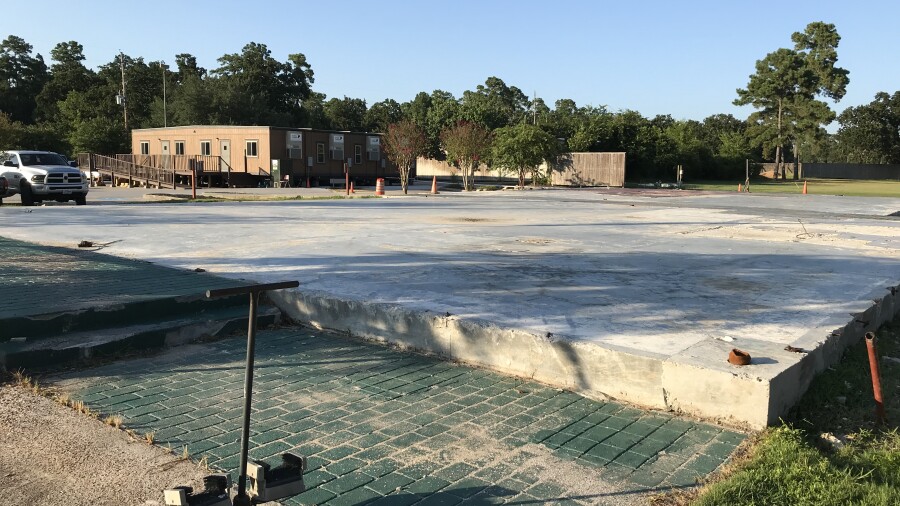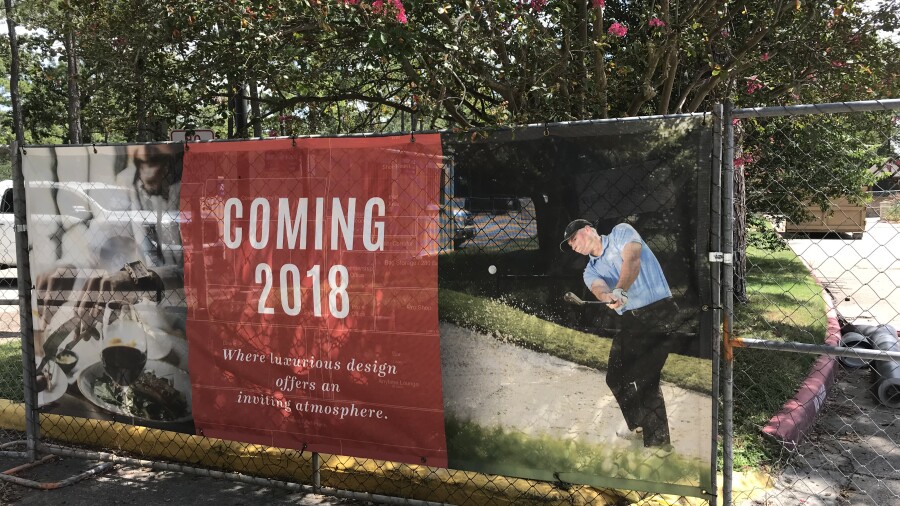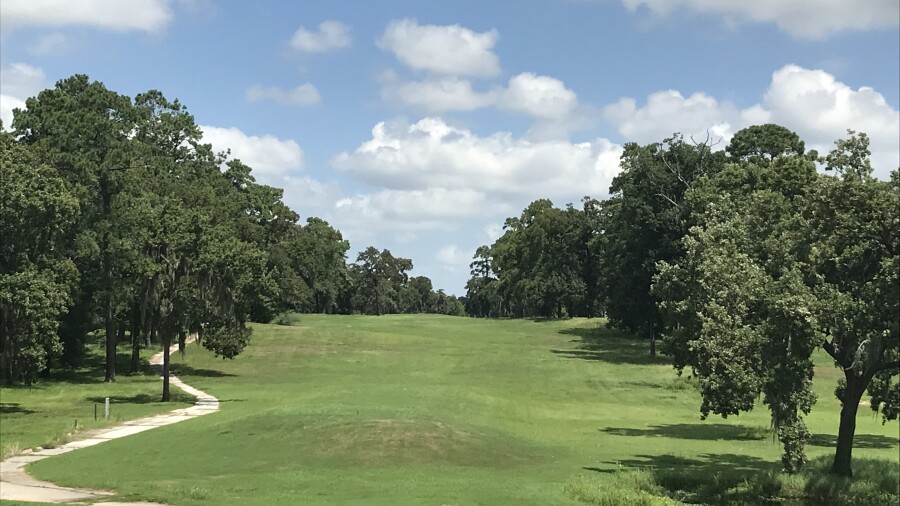To the casual observer, it seems pretty much like business as usual in the Houston area a year after one of the worst natural disasters in U.S. history, Hurricane Harvey, struck the Texas Gulf Coast. But the truth is, despite the overall look of normalcy, the rebuilding process continues. Some have just moved on, of course. The local golf scene is no exception.
A year ago Cypresswood Golf Club, one of the Houston area's most popular public golf facilities was essentially one big lake. Hurricane Harvey had its way with the 36-hole daily fee facility, just like it did with thousands of business and homes in the Houston area, Nearly 40 inches of rain over several days turned nearby creeks into raging rivers, inundating the terrain with floodwaters, and Cypresswood, for all intents and purposes, was no more.
The club lost nearly everything – its maintenance facility, its turf equipment, its entire fleet of golf carts, and its clubhouse.
Owned and operated by Texas-based Foresight Golf, it would be a long road back for Cypresswood, which had been flooded before, most notably by Tropical Storm Allison in 2001, when it received about three feet of precipitation in three days, and closed to its golfers for an extended period. But on May 11, 2018, despite rumors that it was out of business for good, Cypresswood did indeed reopen. It now has a temporary clubhouse, brand new golf cars and maintenance equipment (paid for in part by flood insurance) and two golf courses -- the Cypress and much heralded Keith Foster-designed Tradition layouts -- that are getting busier by the day.
"Both golf courses are in really good shape," said Jonathan Roberson, general manager at Cypresswood, which is located a little less than 30 miles north of downtown Houston. "The silver lining is that down the road, we're going to have a brand new clubhouse and restaurant."
Indeed, in the long term, Cypresswood may be better than ever. Once the water receded, staff took the opportunity to rebuild its bunkers. Other courses in the area did much of the same, but some of the courses just couldn't rebound from the storm and never reopened.
Harvey's impact on the Texas coast
Harvey's landfall on the Texas coast came on Aug. 25 as a Category 4 hurricane. Ground zero was Rockport and the Corpus Christi areas, where winds approaching 140 mph and heavy rainfall wiped out entire blocks, left thousands homeless and killed several dozen people in the area. Nearby golf courses were, of course, devastated, but most of them, like Rockport Country Club, have recovered to a certain degree and reopened. Palmilla Beach Resort in Port Aransas, located right next to the beach, is still closed, but is expected to open later this fall.
Of course, this was only the beginning for Harvey in Texas. After its initial collision with the Texas coast, it reversed course, re-emerged over the Gulf of Mexico and made another landfall a couple of hundred miles or so north in the Houston area, which has more than 6.5 million residents. Starting on Aug. 26, 2017, it parked for several days, dumping torrential rain without break for the most part.
The bayous and creeks couldn't handle the rush of water, and soon communities and golf courses near those waterways were flooded. Some communities in the Houston area received as much as 60 inches of rain. More than a quarter of Harris County was submerged by water.
Harvey didn't discriminate, of course, taking on poor and rich neighborhoods, downtown and the suburbs. High-end clubs like Lakeside Country Club and Champions Golf Club received extensive flooding, but have largely recovered a year later.
At Kingwood Country Club, northeast of Houston, flooding from the San Jacinto River inundated all six of its golf courses. The clubhouse, which had undergone a multi-million dollar renovation not long before Harvey, was ruined from floodwaters. It's now scheduled to reopen in January after a costly restoration. And like Cypresswood, Kingwood took the opportunity to improve the golf courses.
At least these courses and clubs are back in business. A few weren't so fortunate.
Golf course casualties
The golf business is difficult enough as is. Cypresswood, which opened its first 18 holes in 1997, was actually 54 holes at one point, but because of dwindling play and flooding issues from previous storms, decided to close down its Creek Course back in 2010, reducing the facility to 36 holes, a number it has been operating at comfortably ever since.
Ironically, when Cypresswood went from three to two golf courses, there would be only one 54-hole pubic facility left in the Houston area – Bear Creek Golf World.
Now there are no 54-hole public golf operations in the Houston area because the city of Houston raised the white flag on Bear Creek. (Bear Creek, which sits in a flood plain next to Addicks Reservoir in West Houston, has always been prone to flooding.) Back in May, Harris County Precinct 3 commissioners confirmed that Bear Creek Golf World would never reopen.
So what has Houston lost golfwise? Here's a rundown of Bear Creek and other public courses closed as a direct or indirect result of Harvey:
Bear Creek Golf World: Opened in 1968 by the father of daily fee golf in Texas, the late Dick Forester, Bear Creek was a facility that truly did accommodate every level of player with all three courses designed by the late Jay Riviere. The Challenger was an executive style course (and priced accordingly) that played just over 5,000 yards from the tips. The Presidents Course was around 6,500 yards from the tips, a good test for most players. And the Masters Course, which could be tipped out at more than 7,200 yards, had hosted college level tournaments at one time as well as local professional events. While much of the luster had worn off at Bear Creek as more and more high-end public facilities in the Houston area were being built, Bear Creek was a busy facility that served golfers in Houston for decades. Rumor has it that disc golf may get a home there, but that would only account for a small portion of the land.
Kingwood Cove Golf Club: This was the epitome of value golf, just northeast of Houston. You could play there on the weekends for less than $30 ($12 during twilight) and while conditions weren't exactly country club, they were always more than playable, and the course was plenty challenging. It probably could have reopened following Harvey (even though this was the third time in two years it had been flooded), but the course was already under contract to be sold. The new owner plans to put a housing development on the site.
River Ridge Golf Club: While River Ridge was located well outside of the Houston city limits in Sealy, Texas, this was a 27-hole facility that was worth the drive, especially for those who lived in the Katy area, west of town. Also designed by Riviere, River Ridge was unlike most courses in the Houston area because the holes were anything but flat. Built near the Brazos River (which flooded, of course), River Ridge's three layouts were among the prettiest in the Houston area with plenty of streams, water features and no homes. It was also a championship caliber course as the facility played host to a number of tournaments over the years.
That's 99 holes on those three golf courses alone. Combined with the recent closure of municipal Glenbrook (not due to Harvey) and Pinecrest Golf Club (which is being developed), Houstonians have even fewer public options. But the area has generally been considered overbuilt anyway, which makes the attrition a little easier to accept. Plus, another course, with historic significance, will be reopening soon.
Gus Wortham: A course with nine lives
One course affected by Hurricane Harvey wasn't even open at the time the storm hit. Gus Wortham Park, which is the oldest continually operated 18-hole golf course in Texas (1908), had been closed for renovations last August when Harvey came through and wreaked havoc.
The municipal course, which at one time was the original Houston Country Club frequented by wealthy Houstonians such as Howard Hughes, is located three miles east of downtown. Like River Ridge Gus Wortham sits on terrain atypical to the Coastal Bend area. The course has elevated tees and plenty of dips and ridges.

Harvey was just the latest obstacle for Gus Wortham, which has had several incarnations in its history. A couple of years ago a group that wanted to establish the new Houston Botanic Garden targeted Gus Wortham's land. Not long before that, there was a movement to turn the course into a soccer complex. Fortunately, for golfers, a grassroots effort thwarted both of those plans. As it turned out, though, the botanic garden group successfully shifted its focus to another golf course, Glenbrook, which closed earlier this year to begin that project.
Gus Wortham's $7.5 million dollar golf course and range renovation was proceeding nicely until Harvey came along. Brays Bayou, which runs through the course, flooded its banks by 35 feet just as the course was being grassed. The flooding set the work back at least a month, but even worse was the timing, said Steve Timms, executive director of the Houston Golf Association, which took over operation of Gus Wortham a couple of years ago and is in charge of the renovation.
Originally scheduled to open late fall in 2017, the month delay shortened the growing season, making it impossible to get the course ready before temperatures would get to0 cool to grow Bermudagrass. In addition, several hard freezes in south Texas over the winter made it difficult to get sod and sprigs from the turf farms, pushing the grow-in even further back. By late May 2018, the course still had seven greens that needed to be sprigged, so the HGA took its time.
"We want it to be in great shape when we open," Timms said. "And we also want it to be very mature so it will have a lot of longevity."
The course is now scheduled to open Oct. 1, 2018.
"We're excited to get it open. "We're really proud of it," said Timms, whose group has shifted focus now that it no longer runs the PGA Tour's Houston Open (a group now headed by Houston Astros owner Jim Crane is sponsoring the Houston Open, which is slated to return in the fall of 2019).
Learning from the Harvey experience
Gus Wortham won't just look better, but it is also better equipped to handle flooding events. This summer during grow-in, the course received 9 inches of rain on the 4th of July. (Yes, the Houston area had more heavy rain events in 2017 after Harvey.) The fairways flooded, but instead of the water remaining there like it had in the past, it drained off quickly. Subsurface irrigation and the re-contouring of the fairways in the renovation are the reasons.
At Cypresswood, plans call for the new clubhouse to be several feet higher than the old one so it can withstand a catestrophic flood in the future. The club also is actually taking a page out of what The Wilderness Golf Club did last year during Harvey. The staff at Cypresswood noticed that one part of the property was still above water during Harvey and now has a plan in place to move all its maintenance equipment and golf carts to that point if the courses receive excessive rainfall.
That's exactly what crews did at The Wilderness, which is managed by KemperSports. During Harvey, the agronomy team strategically placed each vehicle around a putting green on the highest point of the property. Located in a wetlands area near Lake Jackson southwest of Houston, the majority of the golf course was underwater, except for few small areas around some greens.
Not only did the actions at The WIlderness save nearly $1 million worth of equipment, but it also accelerated cleanup and recovery. In no time at all, relatively speaking, The Wilderness was back in business. Since its reopening last fall and through this year, the Jeffrey Brauer design been one of the highest rated golf courses on Golf Advisor in the state of Texas.
"This one is truly remarkable given our circumstances last fall with Hurricane Harvey and the previous floods in August, September, and October of 2017” said KemperSports General Manager Doug Borow. "It is a real testament to the teamwork displayed on a daily basis by our staff and the support of our customers."






















It would be great if River Ridge could open at least 18 holes.
This course property is a shame not to find a buyer.
Tiger Woods comes to mind.